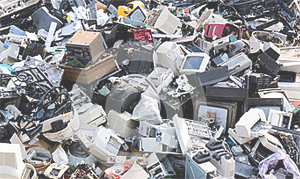What is E-Waste?
Electronic waste or e-waste is described as old, broken or discarded electrical and electronic devices. It is also known as e-scrap or waste electrical and electronic equipment (WEEE). It includes computers, office equipments, consumer electronics, home appliances, etc. In short, anything that runs on electricity, that you probably aren’t going to use ever again comprises of electronic waste (e-waste).
E-waste is the fastest growing waste stream and needs to be addressed seriously and with utmost sincerity as it can causes serious health and pollution problems. E-wastes are considered dangerous, as certain components of some electronic products contain materials that are hazardous, depending on their condition and density. The hazardous content of these materials pose a threat to human health and environment.
Rapid product innovations and replacement, especially in information and communications technology (ICT) and office equipments, combined with the migration from analogue to digital technologies and to flat-screen TVs and monitors, for example, are fuelling the increase in electroni waste (e-waste).
E-waste is non bio-degradable waste and can contaminate land, air & water. Informal processing of e-waste has numerous environmental impacts and can have significant impact on human health.
Why Us?

Offering for our customers.
We have ability to collect, recycle, manage and refurbish e-waste in effective and environment friendly way.
